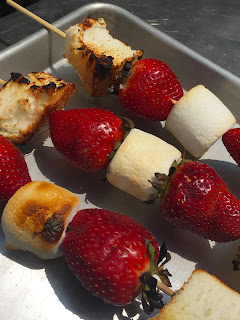That exchange is not atypical for us. When we travel to other cities and countries, we rent apartments with usable kitchens so that we have the opportunity to cook with local ingredients. Yes, the food in Italian restaurants is delicioso, but that is in part because the ingredients they are using are fantastic to begin with. You can make Fettuccini alla Carbonara in Atlanta with freshly collected eggs and homemade pasta, but it still will not rival that made in Italy.
While vegetables such as chicory and artichokes have the same names, they might as well be a completely different species, so distinctive are they in their look and flavor.
And, the cheese…
Branzino or “spignola” is a silver-skinned fish found in European seas and saltwater lakes, which has a firm, white, delicate-flavored flesh and few small bones. It is a prized ingredient in Italy because it is so easy to prepare and yet so delicious. Julia Child once said, “great ingredients, simply prepared are always best.” Truer words were never spoken!
Fresh Branzino, cleaned, skin on (about one per person for a meal)
2 lemons, sliced
Extra-virgin olive oil
Salt
Freshly ground pepper
Preheat the oven to 500°F. Wrap a baking dish or roasting pan in aluminum foil. Drizzle a little olive oil on the pan and spread to evenly coat. Lay the fish on the tray without overlapping. Fill the cavities with sliced lemons, drizzle more olive oil over the fish. Sprinkle salt and freshly ground pepper on top of the fish.
Place fish in the oven and roast until the skin of the fish is dark brown and the flesh of the fish is an opaque white. Remove the tray from the oven and let cool for a few minutes before serving. It is best to serve right from the tray for presentation as the fish is delicate and may break apart if moved to a serving dish. Serve with roasted potatoes and sautéed chicory. Buon appetito!


























